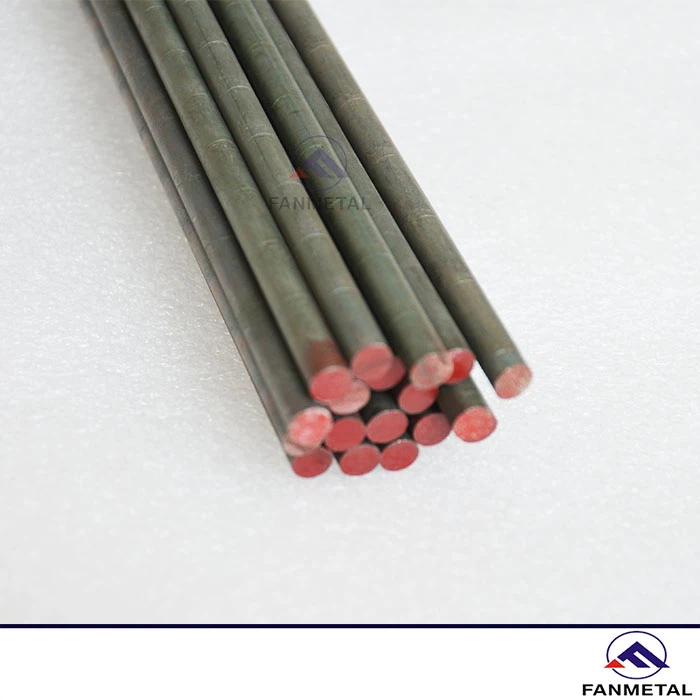Cobalt-based alloys are alloys formed by adding elements such as chromium, tungsten, nickel, molybdenum, and carbon to cobalt as the matrix (usually with a content of more than 50%). They are widely used in high-end industrial fields due to their excellent wear resistance, high temperature resistance, and corrosion resistance. There are mainly the following classifications:
1. Classification by use and performance
- Wear-resistant cobalt-based alloys:
Represented by Stellite alloys, they contain high carbon (0.2%~3.0%) and tungsten (3%~25%), and obtain extremely high hardness and wear resistance by forming carbides (such as Cr₂₃C₆, WC). They are often used in occasions with severe wear, such as engine valves, valve sealing surfaces, and cutting tools.
- High-temperature cobalt-based alloys:
Adding elements such as chromium, nickel, and molybdenum to form stable solid solutions and carbides, maintaining high strength and oxidation resistance at high temperatures of 650~1000℃, such as Haynes 25 (L-605), which is used in aircraft engine combustion chambers, turbine blades, etc.
- Corrosion-resistant cobalt-based alloys:
Increasing the chromium and molybdenum content (such as Cr 20%~30%, Mo 5%~10%), enhancing stability in corrosive media such as acid and salt, and are often used in the chemical industry, marine engineering, etc., such as Haynes 188 alloy.
Mainly cobalt-chromium-molybdenum (Co-Cr-Mo) alloys, with good biocompatibility and mechanical properties, are used in artificial joints, dental implants, etc.
2. Common grades include Stellite 6 and Stellite 6B
As a non-ferrous metal supplier with more than 20 years of production and sales experience, FANMETAL can provide overseas customers with cost-effective cobalt-based alloy products such as Cobalt 6B Round Bar, Cobalt Alloy 6 Nozzle, Stellite 6 Electrode, Stellite Alloy Ball Valve, and Stellite Homogenizer.
-
Ingredient Differences
| Element | ASTM A562 Grade 6 | 6B |
|---|---|---|
| Co | margin(约 65%-70%) | margin(约 65%-70%) |
| Cr | 27%-30% | 27%-30% |
| W | 3%-5% | 3%-5% |
| C | 0.7%-1.0% | 0.4%-0.7% |
| Si | ≤2.0% | ≤2.0% |
| Mn | ≤2.0% | ≤2.0% |
| Ni | ≤3.0% | ≤3.0% |
- Performance Differences
-Hardness and Wear Resistance:
Stellite 6 has a higher carbon content, forms more carbides, has a room temperature hardness of about HRC 40-45, has stronger wear resistance, and is suitable for high-stress wear environments.
Stellite 6B has a slightly lower hardness (HRC 38-42) due to its lower carbon content and fewer carbides, but its wear resistance is still excellent under medium loads, and its toughness is significantly improved.
-Toughness and Crack Resistance:
The high carbon content of Stellite 6 makes its toughness relatively low, and it is easy to crack under impact loads; Stellite 6B improves its toughness by reducing carbon (impact toughness increases by about 20%~30%), and is more suitable for occasions that require fatigue resistance or crack propagation resistance (such as valve sealing surfaces, pump impellers).
-High temperature performance:
Both can maintain good performance below 600℃, but Stellite 6B has a more uniform distribution of carbides and slightly better organizational stability at high temperatures, making it suitable for wear-resistant scenarios at slightly higher temperatures (such as 650℃).
Toughness and Crack Resistance:
The high carbon content of Stellite 6 makes its toughness relatively low, and it is easy to crack under impact loads; Stellite 6B improves its toughness by reducing carbon (impact toughness increases by about 20%~30%), and is more suitable for occasions that require fatigue resistance or crack propagation resistance (such as valve sealing surfaces, pump impellers).
- Differences in application scenarios
Stellite 6: High wear, low impact environment: cutting tools, sand mill parts, excavator bucket teeth. Parts that need to resist hard particle wear: ore crusher lining, mud pump valve seat.
Stellite 6B: Medium wear, high impact environment: turbine blade seal ring, ship propeller bearing, internal combustion engine valve seat. Parts that need to be welded or repaired: Due to good toughness and low tendency to weld cracks, it is suitable for surfacing repair (such as surfacing of valve sealing surface).










